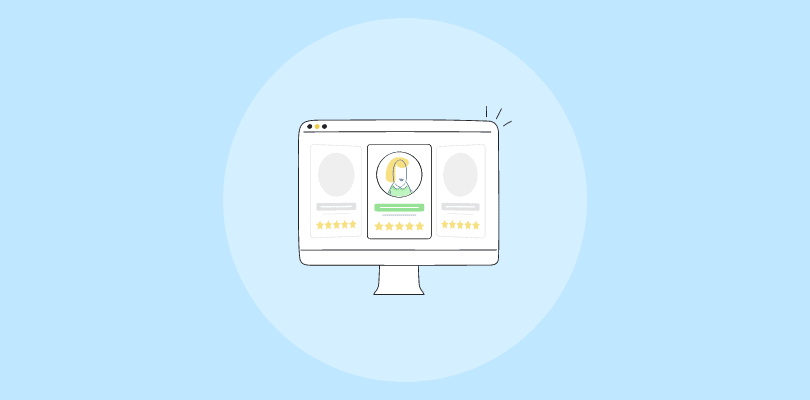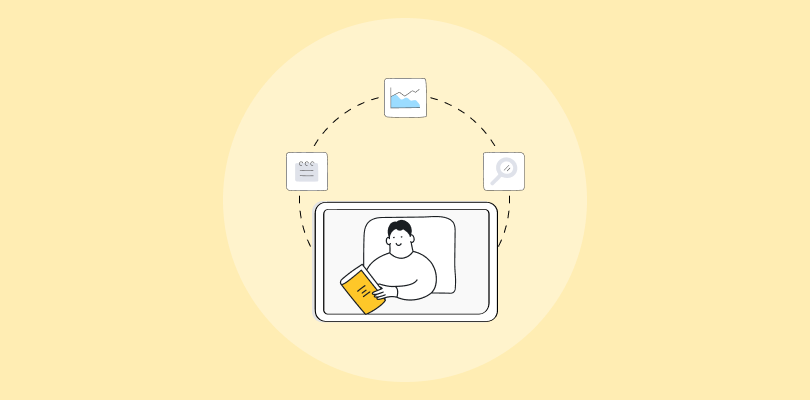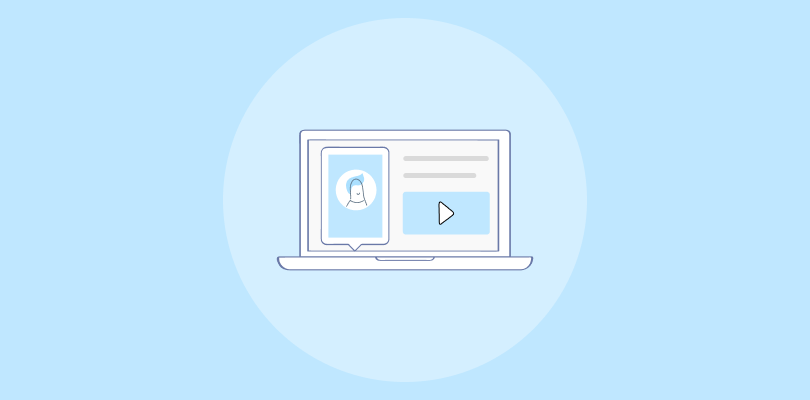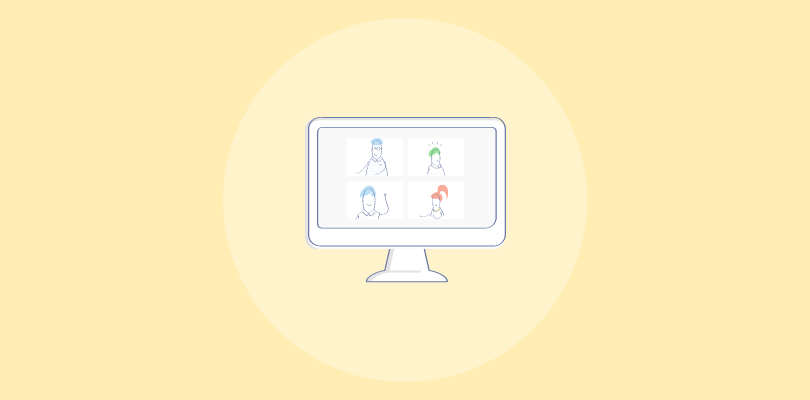Want a detailed analysis of live vs automated webinars?
Live webinars and automated webinars represent two distinct approaches to online video sessions, each with its own set of advantages and challenges.
Choosing between the two depends on a number of factors.
To make it easier for you, I’ve listed below the main differences between the two, the pros and cons of each, and finally, how to choose the right one.
What Is an Automated Webinar?
An automated or recorded webinar is a pre-recorded video session that simulates a live webinar experience. These webinars are recorded in advance and can be played back at any scheduled time or on-demand, providing the appearance of a live event.
Automated webinars are used for marketing, training, and educational purposes. Organizations can leverage the benefits of these webinars without the logistical challenges of hosting live events.
Create a recording of your lesson or presentation, including any calls to action, promotional deals, etc., and set it to play continuously. Arrange for broadcasts at designated times, or utilize the “Watch Now” option for immediate viewing. Engage with your audience no matter their location or the time.
So if you are looking to grow your business with automated webinars, maximize its reach and efficiency, you can expect great outcomes with the strategy.
These webinars are especially useful for businesses looking to maximize their reach and efficiency through online communication strategies.
| “I really like the automated webinars feature. It allows me to feel like I’m in multiple places at once. My time can be spent working with current clients instead of feeling the need to run live webinars every day.” – Amanda Haddaway, HR Anwerbox |
Pros of Automated Webinars
- Automated webinars help offer knowledge on demand, making them the perfect solution for reaching a global audience, offering flexibility, and repurposing content.
- You can bring in passive leads and sales around the clock with the help of automated webinars.
- They are timeless. They are not restricted to a specific time slot. Attendees can find a convenient time that works best for them.
- Since the webinars are pre-recorded, you can ensure consistency of presentations every time.
- Presenters can record the webinars at their convenience with time for editing and refinement.
- Automated webinars are scalable and they can accommodate an unlimited number of attendees.
Cons of Automated Webinars
- A diminished sense of urgency and exclusivity leads to procrastination or lower perceived value.
- Lack of real-time interactions that live webinars support, such as live polls, feedback, and personalized responses to queries.
Want to learn more about automated webinars?
Take the FREE 30-Day Automated Webinar Challenge to bring in passive leads and sales round the clock.
What Is a Live Webinar?
| “Webinars are not just a one-time event; they have a lasting impact. By repurposing webinar content, businesses can continue to deliver value and attract new leads long after the live event is over.” – Jeff Bullas, Content Marketing Strategist |
A live webinar is an online seminar or presentation that is broadcast in real-time over the internet. Participants can join from anywhere in the world and interact with the presenter or moderator.
During a live webinar, participants have the opportunity to listen to audio, watch video presentations, view slides, and engage in interactive activities such as Q&A sessions, polls, and discussions.
Live webinars are commonly used for educational presentations, employee training, product demonstrations, panel discussions, thought leadership sessions, and interview-style presentations.
They provide a convenient way for people to learn, ask questions, and share knowledge without the need to travel or attend in-person events.
Pros of Live Webinars
- They occur in real time, and participants can join sessions as they unfold.
- They have the unique advantage of a one-time, exclusive event, with a sense of urgency and encouraging focused participation.
- They are more personal by nature, with a human element, spontaneity, real-time interactions, and personalized content.
- Great for lead generation, as attendees are often required to register beforehand. You can use the contact information and other data for marketing purposes.
Cons of Live Webinars
- They are not reproducible and can become outdated quickly, especially when discussing time-sensitive topics or technical issues.
- They are not editable. Whatever blooper happens, it becomes a permanent part of your audience’s experience.
Live vs Automated Webinars: A Comparison Table
| Aspects | Automated Webinars | Live Webinars |
| Mode of Interaction | Pre-recorded content with limited interaction with the host. | Real-time interactions with participants through discussions, Q&A & polls. |
| Timing | Can be accessed on demand at any time. | Occurs at a scheduled date and time. |
| Planning & Management | Requires initial setup & automation to reduce ongoing efforts. | Requires careful planning, scheduling, coordination, and backup plans. |
| Look & Feel of the Webinar | Largely glitch-free due to editing. Polished look. | Changes of goof-ups and missing out on key information. |
| Adaptability | A fixed content format. Doesn’t adjust to real-time questions & comments. | Presenters can adapt their content based on questions & feedback from the audience. |
| Level of Personalization | Less personalized as interactions are predefined in such automated events. | Can personalize interactions with attendees based on the latter’s reactions. |
| Content Lifespan | Longer lifespan as content remains the same until there is an update or re-recording. | Can accommodate last-minute changes & updates to appeal to the audience. |
| Engagement Level | The level of engagement is low and impersonal. | Being live, these events are personal and engaging. |
| Conversion Rate | The conversion rate is generally much lower for pre-recorded webinars. | Proven to result in a higher conversion rate. |
| ROI | Limited earnings as they support only a fixed number of attendees and are available only at a fixed time. | With the right planning, this format can serve as an additional source of revenue as it is always available for participants to watch. |
Now that you know the differences between automated vs live webinars, let’s get down to understanding how to know which one is right for you.
Which Webinar Type is Best for You?
It highly depends on your needs, objectives, and resources. Both automated and live webinars have their advantages and limitations, and the choice between them should be based on what you aim to achieve with your webinar, your available resources, and the preferences of your target audience.
After deciding the type of webinar you need, the next step is to choose the right webinar software that supports it.
Here are some factors to consider when selecting such software:
- Purpose and Features: Determine the primary purpose of your webinars. Do you need it for educational purposes, marketing, team meetings, or training sessions? Different platforms offer different features tailored to specific needs. Look for essential features, such as screen sharing, live chat, recording capabilities, and the ability to host multiple presenters. Consider additional features like polling, Q&A sessions, and integration with other tools. When making a meetings vs webinars comparison, this distinction becomes particularly important to ensure your chosen platform aligns with your specific goals.
- Audience Size: Consider the maximum number of participants and presenters you expect. Some platforms are suited for small, interactive sessions, while others can host thousands of attendees. Make sure that the software can handle your intended audience size and any future growth plans.
- Ease of Use: The platform should be easy for both presenters and attendees to use, with a straightforward setup process and intuitive navigation. A complicated interface can deter participation and negatively impact the effectiveness of your webinars.
- Video and Audio Quality: High-quality video and audio are crucial for keeping your audience engaged. Look for platforms that provide HD video and clear audio capabilities, as well as the ability to adjust quality settings based on internet bandwidth.
- Interactivity and Engagement Tools: Features such as chat, polls, surveys, and Q&A sessions can significantly enhance interactivity and keep your audience engaged. Some platforms also offer gamification or social media integration for a more engaging experience.
- Recording and Playback: If you plan to record your webinars for on-demand access, check the recording capabilities of the platform. Look for options that allow easy recording, editing, and sharing of webinar content.
- Integration with Other Tools: Integration with CRM, email marketing platforms, and other tools can streamline your workflow and enhance the overall experience. Check if the webinar software can integrate seamlessly with the tools you already use.
- Security and Privacy: Ensure the platform complies with relevant data protection regulations (such as GDPR) and offers features like password protection, encryption, and controlled access to safeguard your data and the privacy of your attendees.
- Cost: Evaluate the pricing structure of the platform to ensure it fits within your budget. Consider the cost per host, per attendee, or any additional features that may incur extra charges.
- Customer Support and Reliability: Reliable customer support is crucial, especially during live events. Look for platforms with a reputation for responsive customer service, including live chat support, tutorials, and resource libraries.
- Trial Periods and Demos: Before committing, see if you can test the platform through a free trial or demo. This will allow you to assess its suitability for your needs firsthand.
By considering these factors, you can narrow down your options and choose the webinar software that not only fits your requirements but also enhances the overall experience for your presenters and attendees.
Choose the Right Type of Webinar!
Webinars have become an essential tool for businesses and individuals looking to engage with their audience, share valuable insights, and drive conversions. You have the two popular webinar formats before you.
Whether you prefer the authenticity and spontaneity of live sessions, or the convenience and scalability of automated webinars, understanding these two formats thoroughly can help you maximize the impact of your webinar strategy.
If you’re looking for an all-in-one webinar software, then WebinarNinja can be your go-to platform. Designed for coaches, teachers, trainers, and consultants, it supports live, recorded, series, or hybrid webinars.
Sign up today for a free trial or request a personalized demo.
Want to host a webinar for free?
Use WebinarNinja to teach, improve marketing, and grow your sales.








